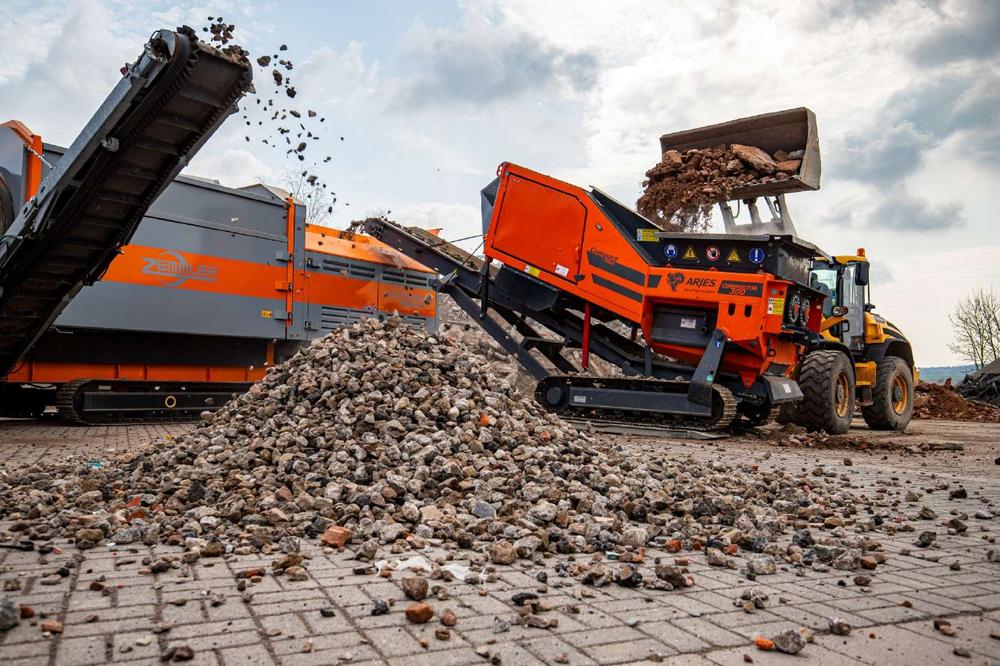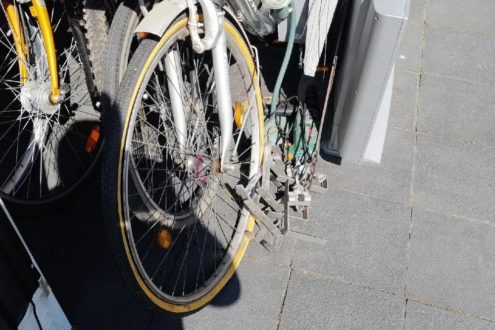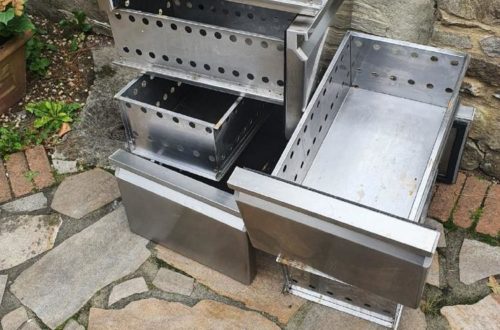
Why We Should Be Talking About Concrete Recycling
In times of scarcity, stones, bricks or even entire elements were often reused. Today, reuse is not just a financial option – it’s an ecological necessity. Modern rubble, though, is far more complex: reinforced concrete, composites, coatings and other add‑ons make selective separation harder. This is where concrete recycling comes in. If building elements are dismantled separately, much of the material can be processed for new purposes and fed back into the economy.
From Old to New – What Is Concrete Recycling?
Concrete recycling means processing old concrete – for example from demolition projects – into new aggregates (“recycled aggregate”). These aggregates can then be turned into recycled concrete that serves in many fields, from roadbeds and foundations to precast elements.
Imagine your city demolishes an outdated multi‑storey car park:
- Big concrete slabs and chunks are collected on site.
- The concrete is broken down and foreign materials such as steel are removed.
- The resulting recycled aggregate can later act as sub‑base for roads or – when quality allows – directly replace virgin aggregate in fresh concrete.
Turn waste into value! With the recycling solutions from ARJES you unlock the full potential of your construction and demolition waste. Whether concrete, bricks or mixed debris – our machines deliver powerful shredding, reliable separation and outstanding profitability. Get in touch – we’ll find the right set‑up for your job!
How Does Concrete Recycling Work?
The workflow can be summarised in five easy‑to‑grasp steps
- Selective Demolition
Different materials are kept separate on site. Pure concrete is hauled away independently of mixed waste. - Size Reduction
On the recycling yard, or directly on site, a crusher is used. A mobile twin‑shaft shredder such as the COMPAKTOR 300 breaks the concrete into manageable pieces, drastically reducing volume. - Sorting
Integrated magnetic separators pull out ferrous metals, while windsifters use air jets to blow off lighter contaminants like insulation. - Further Processing
The various grain sizes can now either go straight into road construction (e.g. frost‑protection layers) or be refined into new concrete mixes. - Reuse
Blending the recycled aggregates with cement, sand and water creates fresh concrete – this final loop closes the material cycle.
Site example: A WWII bunker is demolished. A crawler excavator feeds large chunks onto a mobile shredder. After crushing and sorting, clean, graded aggregate remains – ready for reuse without the need to quarry new gravel.
Why Is Concrete Recycling Important?
Concrete recycling delivers a triple dividend: it shrinks our ecological footprint, stabilises construction budgets and builds public trust. By turning yesterday’s rubble into tomorrow’s resource we drastically cut quarrying and the CO₂‑heavy production of virgin aggregate, while keeping scarce landfill space free.
- Environmental
relieffewer natural resources extracted, less landscape scarred. - Cost savings
lower material bills and disposal fees. - Climate protection
reduced cement demand cuts greenhouse‑gas emissions. - Public image
demonstrable sustainability wins clients and approvals.
Contractors who switch to recycled aggregates also protect themselves against volatile raw‑material prices and meet the tightening sustainability criteria seen in public tenders—turning compliance into a marketing advantage. Local authorities profit as well, because circular procurement keeps money in the region and reduces truck traffic. In short, recycling concrete transforms a disposal headache into a strategic asset for every stakeholder.
Where Is Recycled Concrete Used?
Recycled concrete isn’t a niche material; it has quietly become a workhorse across the construction spectrum. From heavy‑load infrastructure to small backyard makeovers, there is a fitting use‑case for every quality grade. Below are a few of the most common applications:
- Foundations & Slabs
Many halls and houses can partly stand on recycled concrete once strength requirements are met. - Landscaping
Ideal as base layer for paths, patios or lawn‑grid blocks. - Precast Elements
Several manufacturers already integrate recycled aggregates into pavers, slabs or façade panels. - Road Construction
Mixed recycled aggregates are widely used as sub‑base or frost layer under asphalt.
Real‑life nugget: A homeowner removed an old terrace, crushed the slabs and reused the material as sub‑base for a garden path – saving disposal fees and the cost of new gravel.
Muscle & Brain – With What Is Concrete Recycled?
Concrete recycling needs robust machines, not rocket science:
- Powerful Crushers
Two‑shaft shredders from ARJES unleash high torque on stubborn material. Choose the flexible COMPAKTOR 300 for smaller jobs or the heavy‑duty TITAN 900 when huge, reinforced chunks are waiting. - Sorting Technology
Magnetic separators lift steel out; windsifters create an air curtain to separate light from heavy. - Skilled Crew
Professionals assess the rubble and handle hazardous inclusions responsibly.
More and more mobile crushers drive straight onto the building site, cutting long truck hauls to a recycling plant.
From Rubble to Resource – How Recycled Concrete Builds Our Future
Concrete recycling benefits everyone: it relieves landfills, saves money, preserves resources and improves the construction industry’s eco balance. Whether you process rubble from a city‑scale project or from a private patio, the potential is immense. Going forward, expect wider use of mobile shredders and smart sorting tech to push recycling efficiency even further.
No Greenwashing – Recycled concrete must be deployed in truly relevant volumes. Large projects deserve real quality and environmental diligence.
What’s Next? – AI‑assisted sorters, electro‑dynamic fragmentation or carbon‑binding processes could become mainstream within the next few years.
Going forward, expect wider use of mobile shredders and smart sorting tech to push recycling efficiency even further.
Rubble Was Yesterday – Our Conclusion
Recycled concrete has gained real momentum. Rising material prices, limited landfill space and growing eco awareness will only accelerate the trend. So why not turn the old into the new and help the planet at the same time? Next time you plan to demolish a slab or lay lawn‑grid blocks, remember concrete recycling.
Curious? Explore industrial shredders from ARJES – from the agile COMPAKTOR 300 to the mighty TITAN 900. Discover how we can make concrete and demolition recycling both efficient and resource‑friendly. In selective demolition, on the recycling yard or in mobile deployment – our high‑torque solutions turn mineral waste into tomorrow’s building material!
ARJES GmbH
Borntalstraße 9
36460 Krayenberggemeinde
Telefon: +49 (36969) 58-0
http://www.arjes.de
Marketing
Telefon: +49 (3695) 85 855-265
![]()




